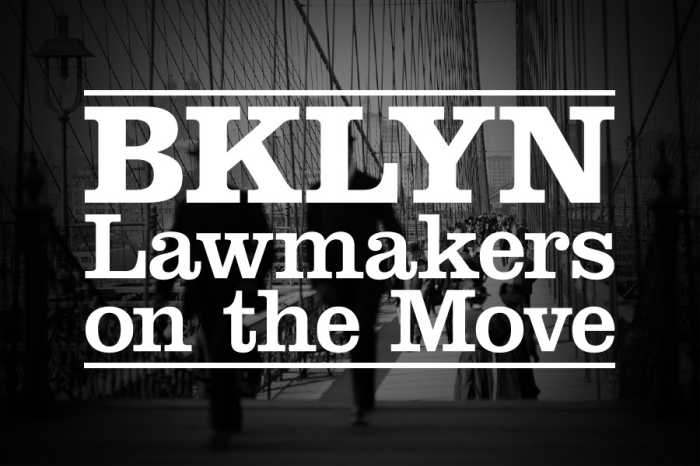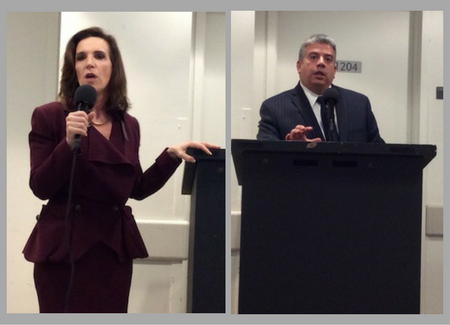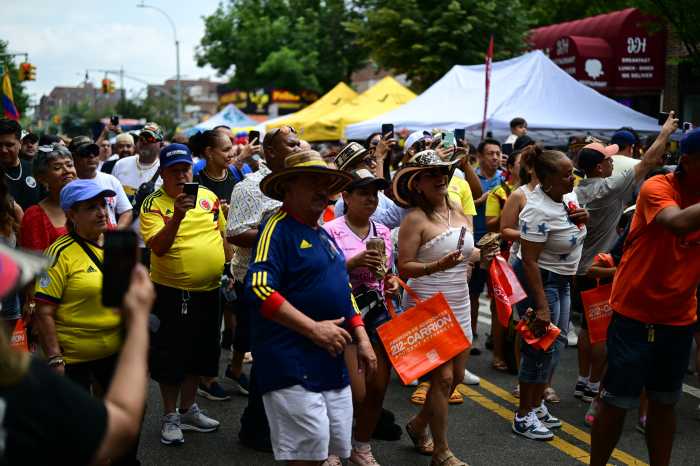New York might often tout its progressive bonafides, but it is the 49th state to implement Raise the Age legislation that would divert youth under 18 from the criminal court for criminal conduct to Family Court, according to a group of panelists who were at a forum at First Presbyterian Church of Jamaica last week.
“The law does afford judges the discretion to afford that youthful offender treatment rather than the case turning into an adult conviction and they having to serve state prison time,” said Acting Supreme Court Judge Lenora Gerald on May 16. “As a form of earning that youthful offender treatment, they start with having young people enter different programs and basic services.”
Rather than incarcerate youths for their crimes, the Family Court would send them to psychosocial programs that would help get to the core of their misbehavior and bring about a new path in their lives, according to Gerald.
Raise the Age became legal in October 2018, but only applied to youths that are 16-years-old. In October 2019, it will also apply to 17-year-olds, according to Gerald. Since the law was enacted, two-thirds of the 150 cases in Queens have been diverted to Family Court.
Currently, 13, 14, and 15-year-olds are still being charged in the adult criminal court for violent felonies, according to the panelists.
“There is no broad brush for the young people that come through that door,” said Gerald. “Each of them is most likely experiencing different issues and different trauma they have never addressed previously.”
PTSD, bullying, substance abuse, human trafficking and immigration status have been some of the issues that have plagued the youths that have found themselves in handcuffs, according to the judge. Some have faced problems with all of the above.
“For many of them [the programs are] a start in addressing the many of issues – not excuses to their behavior, but for reasons why they are acting the way they are and the reasons why there is a lot of violence in the community,” said Gerald.
Despite fears that taking on youth offenders in Family Court would result in a deluge of cases, Gerald has found the Raise the Age policy and the programs for them to manage. However, she does foresee a caseload increase that is anticipated for October once 17-year-olds are added to the statute.

The Raise the Age policy also helps some youths to avoid the court process altogether, according to Judge Dean Kusakabe, of the Family Court of the State of New York in Jamaica.
“The Department of Probations can try to resolve an arrest where a young person has been arrested and they can go through a process with the complainant in a way to resolve the matter outside of the court,” said Kusakabe, who used to handle cases for the Juvenile Rights Division in the Legal Aid Society. “In this context, there has been a huge Juvenile Justice Reform movement and you can see the cultural shift across the board by corporation counsel, by defense counsel and by probation. That has been very encouraging.”
About one-third of cases still remain in Family Court, according to Judge Edwina Mendelson, the deputy chief administrative judge for Justice Initiatives.
“The cases that are presumed to stay in the adult system without the consent of the prosecutor involve significant physical injury,” said Mendelson. “Sexual offenses, those types of cases are expected to stay.”
Cases where there is a display of a deadly weapon, are also expected to stay in the adult system, according to Mendelson. Other felony cases that may be considered violent, but don’t involve weapons, significant physical injuries or sexual offenses have been diverted to Family Court.
“What we see is that we are taking a lot more chances on these young people and that we might have not normally have done,” said Stacey Spear-Desamours, the Dept. of Probation director for Citywide Youth. “We are looking at young persons as a whole, we are looking at how we can service these young people without having to necessarily refer to corporation counsel. We are really making an effort and one thing I’m noticing is those complainant victims are open to having a young person’s case adjusted or diverted from court.”
Some of the complainant victims, who have agreed to their offenders’ case being adjusted had agreed to simply have an order of protection to keep the young people from bothering them again and to keep them from recidivism, said Spear-Desamours.
“With the order of protection they were more comfortable,” said Spear-Desamours. “We are having great success. We are also trying to fill any gaps that we may have [with programs].”
Helping to keep kids from ending up arrested in the first place is Tiffany Williams, the Deputy Director at LIFE Camp, a crisis management organization for at-risk youth in southeast Queens.
“We know of a conflict long before it gets to a shooting,” said Williams. “We mediate at the earliest points of conflict. We take people from the opposing side of conflict up out of the city and to the woods for a weekend. For that weekend they are responsible for doing team building exercises together.”
The purpose of the retreat is to pull them out of their environment and get to the core of what is going on in their lives. To build on that, individuals can also be apart of LIFE Camp’s urban yogi program, which helps from a group affiliated with Deepak Chopra, an alternative medicine advocate.
“They learn the art of yoga, they learn the art of different therapeutic practices that they can implement in their life,” according to Williams.
Nancy Ginsburg, the director of the Criminal Defense Practice Adolescent Intervention & Diversion Team at the Legal Aid Society, believes the law is not perfect, but it is a step towards progress.
“You never get everything that you want with every legal change,” said Ginsburg. “I think the goal of this law was to create a legal path for as many legal people to be treated as young people as possible. That is what we have seen happen because 75 percent of the people that we have seen prosecuted in the adult criminal court were prosecuted for misdemeanors. All of those kids were diverted out of the adult system and that was a huge win.”
Most misdemeanors could be categorized as normal adolescent behavior, according to Ginsburg. Kids getting in fights, kids annoying people or kids who lack knowledge in how to interact with police on the street are some examples of the misdemeanor arrests she has seen.
“Are there things that could be done?” said Ginsburg. “It would be better if 13, 14, and 15-year-olds weren’t prosecuted in the adult court system. Technically, they are all charged with violent felonies, the vast majority of those felonies are robberies and the vast majority of those robberies are taking people’s iPhones.”









